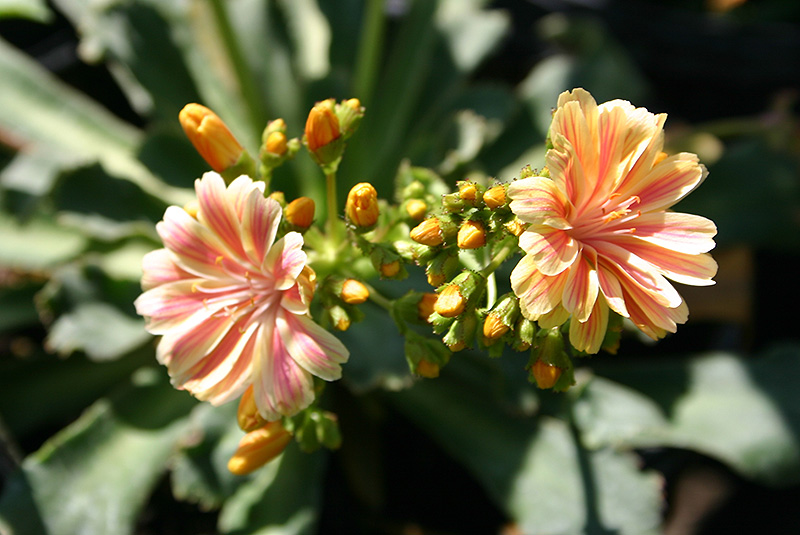Sunset Group Bitterroot
Lewisia cotyledon 'Sunset Group'
Plant Height: 3 inches
Flower Height: 6 inches
Spread: 6 inches
Sunlight:
![]()
Hardiness Zone: 4a
Description:
Stunning primrose-like flowers in brilliant shades of pink, salmon, violet, and orange rise above the deep green foliage; a succulent plant that is perfect for rock gardens or front border plantings
Ornamental Features
Sunset Group Bitterroot has pink star-shaped flowers with salmon overtones and orange streaks at the ends of the stems in late spring, which are interesting on close inspection. Its attractive succulent oval leaves emerge light green in spring, turning forest green in color the rest of the year.
Landscape Attributes
Sunset Group Bitterroot is an herbaceous evergreen perennial with a mounded form. Its relatively fine texture sets it apart from other garden plants with less refined foliage.
This is a high maintenance plant that will require regular care and upkeep, and should not require much pruning, except when necessary, such as to remove dieback. It has no significant negative characteristics.
Sunset Group Bitterroot is recommended for the following landscape applications;
- Rock/Alpine Gardens
- Border Edging
- General Garden Use
Planting & Growing
Sunset Group Bitterroot will grow to be only 3 inches tall at maturity extending to 6 inches tall with the flowers, with a spread of 6 inches. Its foliage tends to remain low and dense right to the ground. It grows at a slow rate, and under ideal conditions can be expected to live for approximately 5 years. As an evegreen perennial, this plant will typically keep its form and foliage year-round.
This plant should only be grown in full sunlight. It requires an extremely dry, well-drained growing location, and will usually die in standing water. It is considered to be drought-tolerant, and thus makes an ideal choice for a low-water garden or xeriscape application. It is not particular as to soil pH, but grows best in sandy soils. It is quite intolerant of urban pollution, therefore inner city or urban streetside plantings are best avoided, and will benefit from being planted in a relatively sheltered location. Consider applying a thick mulch around the root zone in both summer and winter to conserve soil moisture and protect it in exposed locations or colder microclimates. This is a selection of a native North American species.
